When a photo of this little building popped up on the Milano per Sempre Facebook page (Jan. 5, 2022), I thought, “I’ve got to go see that!” The age and “flavor” of the Trattoria Villetta Bar caught my eye.
The next day, I took the Metro out toward the end of the line, at Fermata Inganni, then mistakenly walked a very long loop until I finally arrived at my destination. (Google had misguided my walking direction, but in the process, I saw an area of Milan I had never been to before.)
There were several people at the bar, and we started chatting about the building’s history. Salvatore, a local, and I walked outside to chat. He has lived in the neighborhood for 50 years, and told me about his childhood memories of the surroundings.
In Italy, a “bar” does serve alcohol, but it’s where you go for a “caffè normale” – shot of espresso – as well as a pastry and fresh-squeezed orange juice. It’s often combined with the “Tabacchi” designation, where you can also buy cigarettes, add to your cell phone minutes, or get transit tickets.
Read, below, the original post from Milano per Sempre’s Facebook page,
in Italian, and Google-translated into English.
Questa caratteristica e graziosa casetta adibita a trattoria/tabaccheria è un retaggio di ciò che riconduce a Cascina Creta (“La Crea” in dialetto),un antico casale le cui tracce compiano con certezza sulle Carte del Fieno del Claricio dal 1659, e che prese il nome stesso dall’argilla che si estraeva presso le cave delle campagne circostanti.
Il complesso rurale era circondato dalle acque del fontanile Marcione che irrorandone i campi utilizzati per le coltivazioni,permetteva alle varie aree di essere raggiunte solo tramite dei ponticelli,donando alla cascina un aspetto associabile ad una rocca fortificata.
Sul finire degli anni ’30,la cascina venne spostata in una struttura più moderna, denominata poi “Creta Nuova”.
Pressappoco ad inizio del Novecento risale anche questo piccolo edificio assomigliante ad una baita di montagna,eretta su quella che era la strada per Baggio,ora Via Forze Armate 163.
Il suo impiego principale ero quello di stallo per le carrozze ed i cavalli che dovevano raggiungere le fattorie situate nella zona. Provvista di due campi da bocce,oltre che un luogo di ristoro offriva anche uno svago per gli avventori.
Negli anni successivi cadde in disuso e dagli orti limitrofi,si passò ad un lento degrado della zona circostante,in cui si trovava anche un rottamaio (“rottamat” in dialetto milanese).
Ora rimane questa immagine architettonica tra le più iconiche, nonché da salvaguardare nel bel mezzo delle case popolari, per gli amanti della vecchia Milano e di ciò che riguarda la sua storia.
This characteristic and charming little house used as a trattoria / tobacconist is a legacy of what leads back to Cascina Creta (“La Crea” in dialect), an ancient farmhouse whose traces have been traced with certainty on the Claricio’s Hay Cards since 1659, and which the name itself from the clay that was extracted in the quarries of the surrounding countryside.
The rural complex was surrounded by the waters of the Marcione fountain which, by spraying the fields used for cultivation, allowed the various areas to be reached only by means of bridges, giving the farmhouse an aspect that can be associated with a fortified fortress.
At the end of the 1930s, the farmhouse was moved to a more modern structure, later called “Creta Nuova”.
This small building resembling a mountain hut also dates back to about the beginning of the twentieth century, built on what was the road to Baggio, now Via Forze Armate 163.
Its main use was as a stall for carriages and horses that had to reach the farms located in the area. Equipped with two bowling green, as well as a place for refreshment it also offered entertainment for the patrons.
In the following years it fell into disuse and from the neighboring gardens, there was a slow deterioration of the surrounding area, where there was also a scrap dealer (“rottamat” in Milanese dialect).
Now this architectural image remains among the most iconic, as well as to be safeguarded in the midst of public houses, for lovers of old Milan and what concerns its history.
@nebulosa_simonastucchi

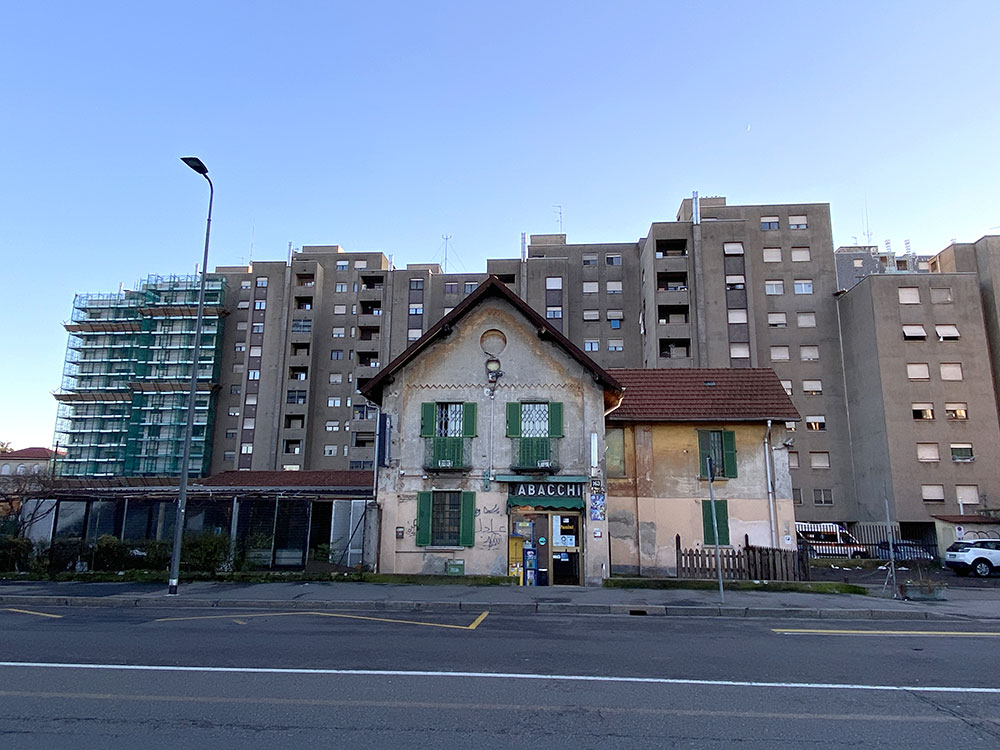
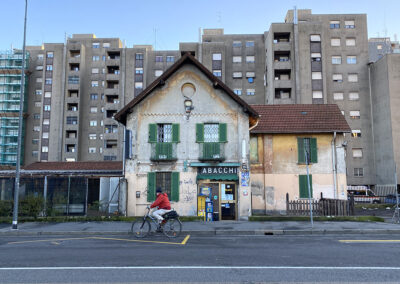
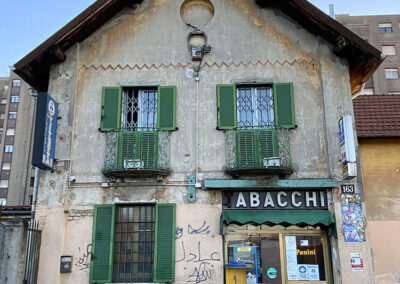
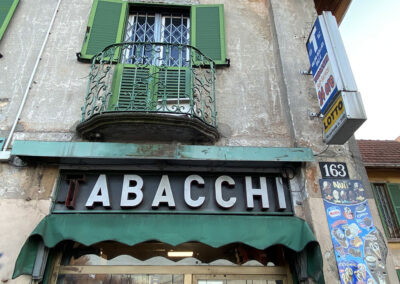
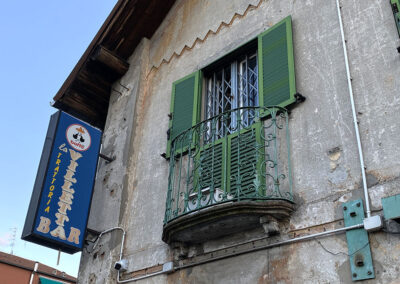
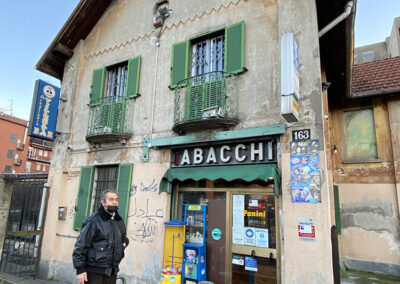
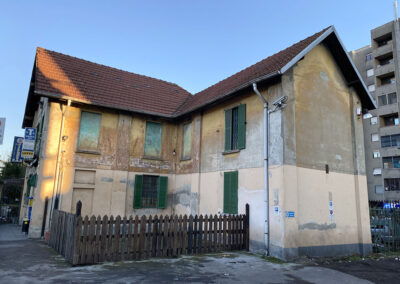
WOW! Very interesting. It’s unusual to find a 100 year old building here in the Pacific Northwest!
Pioneer Square in Seattle, and some of the downtown areas in Tacoma… but nothing like in Italy!